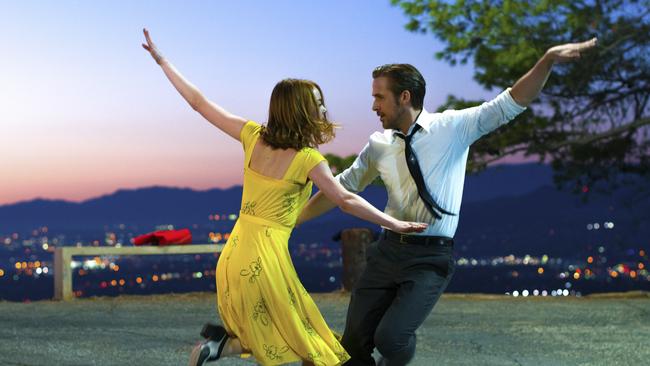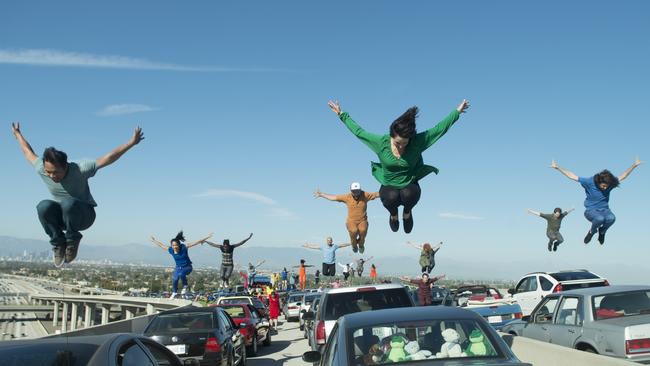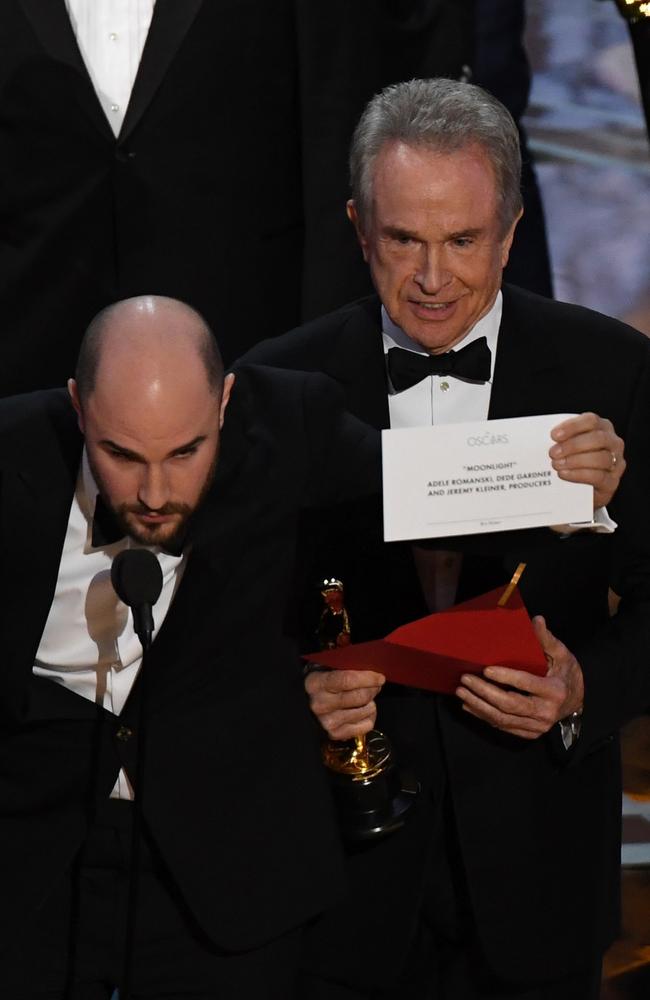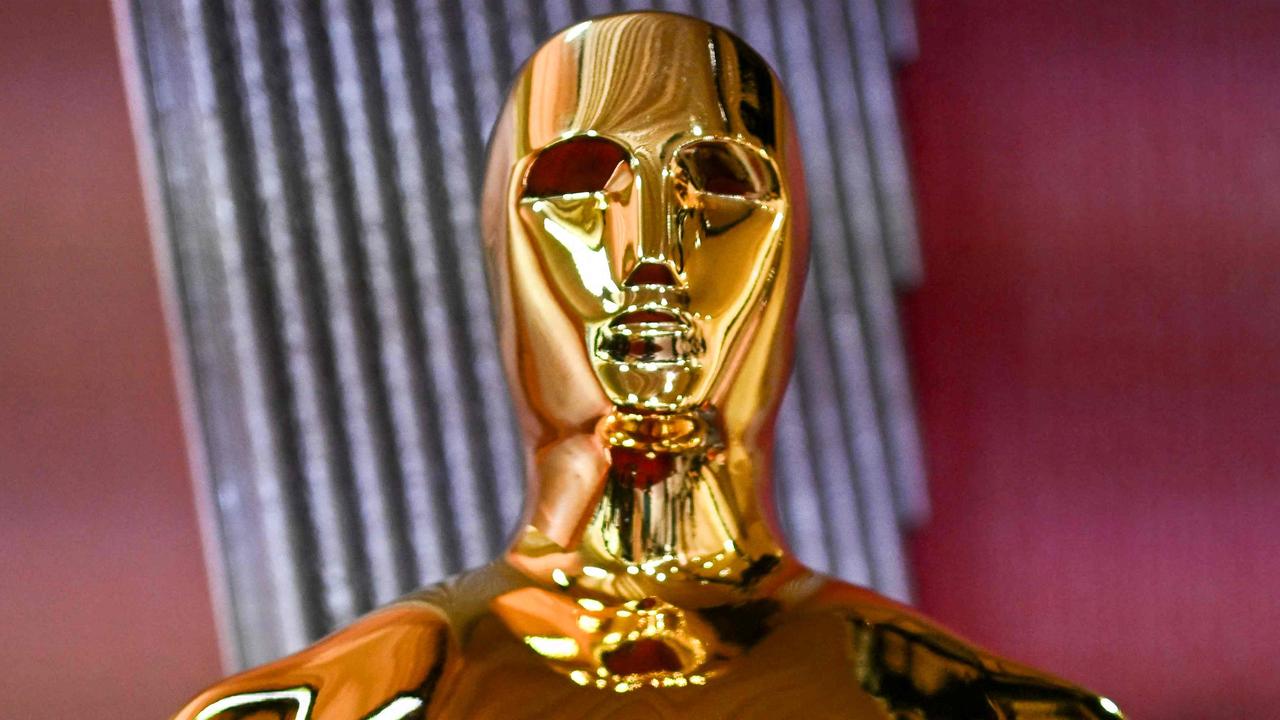How Moonlight defeated La La Land to win Best Picture
LA LA Land somehow lost to a low budget film that’s taken just 15 per cent as much at the US box office. It can blame the convoluted Oscars voting system.

Oscars
Don't miss out on the headlines from Oscars. Followed categories will be added to My News.
THE 89th annual Academy Awards have come and gone faster than those sweet treats that floated from the rafters during the fun-filled ceremony. Of course, we’re still left craving answers as to how the most shocking moment in Oscar history so unexpectedly unfolded.
To be clear, it isn’t just how Warren Beatty and Faye Dunaway were given the wrong envelope and proceeded to announce La La Land the best picture winner instead of legitimate champion Moonlight.
Rather, it’s how in the world did the most obvious Academy Award frontrunner in recent memory lose to a tiny independent film that few veteran Oscar observers (including this one) thought had a serious shot at taking the prize?
Like any good Hollywood mystery movie, there’s an explanation.

Of the 24 categories at the Academy Awards, 23 are determined by a simple winner-take-all system. Voters select from one of the five (or in some cases three) nominees. The contender with the most votes gets the gold, simple as that.
But in the recently expanded best picture field, it’s a bit (in fact, quite a bit) more complicated than that.
Voters are asked to rank the films in order of preference. Their first choice is number one, their second choice number two, and so on.
When the accountants then seek to determine the winner of the best picture race, they first look to see if one film has over 50 per cent of the number one votes. Assuming that no film does (which is probably the case with nine nominees like this year,) they eliminate the film with the fewest number one votes. The accountants then take the number two votes on those ballots, and reassign them as number one votes. If one film then has more than 50 per cent of the number one votes, it becomes the winner. If not, the accountants continue the process of eliminating films and reassigning votes, until one film has an outright majority.

The purpose of this complicated method is to ensure that the Academy’s most prestigious honour goes to a picture that is the consensus choice of the entire organisation. (As opposed to a film which is the favourite of just a slim plurality, which could easily happen with a slate of up to 10 choices.)
In a sense, the preferential ballot is the Oscar’s version of the Electoral College. Both of which can produce surprising results. (See 2016 presidential election.)
In hindsight, Moonlight’s win should not have been completely unexpected. In my 10th annual Academy Awards prediction article posted last week, I brought up the fact that a number of Oscar voters told me how underwhelmed that they were by the heavily hyped La La Land, and questioned whether it was truly best picture material. With the film’s success at the Critics’ Choice Awards, the Golden Globe Awards, the Producers Guild Awards and the British Academy Awards, I deduced that those La La loathers must have been a minority. I paid little attention to the critically acclaimed Moonlight, sensing that it was too small and too personal to win over the Academy at large.
How wrong I was.

While no one (except the newly infamous PwC accountants) will ever know for certain the makeup of the Academy Award voting results, I suspect that La La Land had the most number one votes in the first round of balloting. The film did have a record-tying 14 nominations, and won six of those categories — including best director for Damien Chazelle and best actress for Emma Stone. But as the tabulation continued, Moonlight slowly began to steadily shine, dancing past the lighthearted La La Land.
As host Jimmy Kimmel so wisely noted after the error was exposed, it’s only an awards show.
But the Moonlight madness of the 2017 Academy Awards will surely go down as the most memorable moment in the history of the show.
If only La La Land could sing about that.
This story originally appeared on Fox News and is republished here with permission.
Originally published as How Moonlight defeated La La Land to win Best Picture


